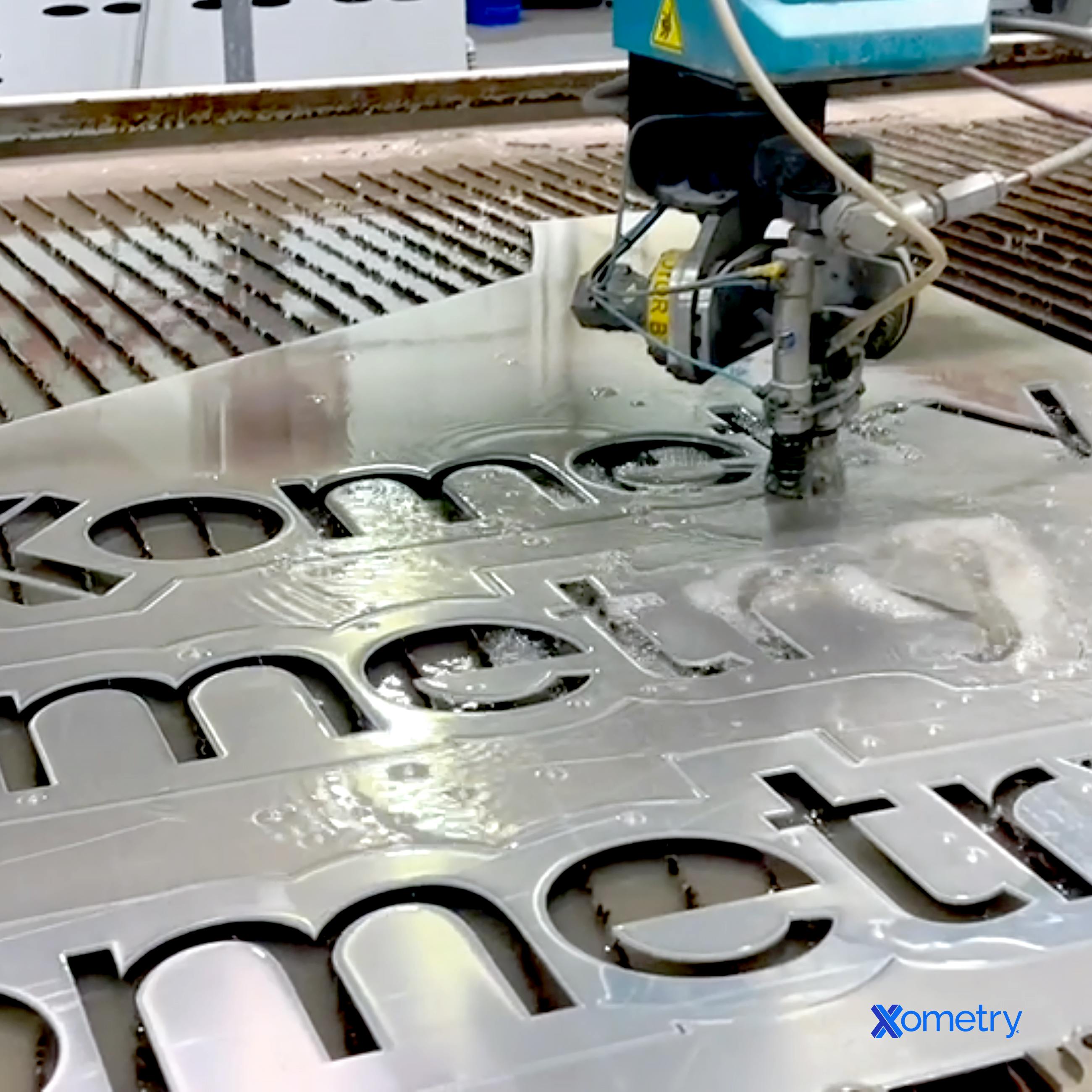The Process of Water Jetting
Water jetting, also known as abrasive jet cutting, is an industrial process that uses CNC (computer numerical control) systems to direct a high-pressure jet of water mixed with an abrasive substance at stock materials and fabricate flat-cut parts.
Water jets, with the help of a high-pressure pump, push water through specialized tubing and then through a nozzle at a volume and a velocity of up to 900 m/sec. A water jet uses an abrasive granular material (often garnet or aluminum oxide) in its high-pressure stream to cut hard materials like aluminum, or use water only to cut semi-soft materials like rubber, foam, or wood. The different types of waterjets include pure, abrasive, percussive, cavitation, and hybrid jets.
Waterjets can cut practically any material—from metal to plastics to foams. This is different from heat-based profile cutting like laser cutting or plasma cutting, which can be quick and powerful for metals but may melt plastics like ABS. Waterjets can often cut thicker materials than other processes. For example, you can use a waterjet to custom cut 6061-T6 aluminum up to 8” thick, but 3” and under is most typical for shape cutting. Here's a great example of waterjet cutting - the machine is cutting the Xometry brand logo:

Applications for Waterjet
Water jetting is most often used for material blanking, and flat panels used for enclosures, chassis, and brackets. Enclosures include device panels, boxes, and cases, such as rackmounts, consoles, and consolets. These may be in “U” or “L” shapes or other styles. Chassis includes hand-held or large industrial testing housing for electromechanical controls.
The use of CNC technology in water jetting allows for excellent accuracy and repeatability. This makes the process an adaptable tool for many industries including mining, aerospace, automotive, electronics, robots, and industrial.
When to choose Water Jetting
One important benefit of water jet cutting is the ability to cut metals without increasing the material surface temperature across the part. This means that the Heat Affected Zone, or HAZ, is small, reducing the warpage or alteration of the part. The internal structure of the material is not compromised either, as it may be using a traditional cutting tool like CNC milling or turning.
Waterjet cutting uses CNC G-code to precisely position the water jet nozzle for each cut. This precision, paired with the narrowness of the nozzle (and subsequently, the water stream), allows for cutting out fine features like sharp corners and holes, as well as complicated shapes with small inner radii. However, note that the edge formed when cutting may have a taper depending on the material type.
Additionally, cutting with water jets results in a very clean cut, reducing the need for sanding or grinding. This means that, unlike laser cutting and plasma cutting, the process does not produce any by-products that might harm human operators or the environment. The water can be recycled, reducing waste and cost while increasing energy efficiency.
Other benefits include fast turnaround time, durability, material selection, and custom finishes. Since water jetting is used to cut a variety of sheet metals—materials that often have high strength, conductivity, weight, and corrosion-resistance—the result is highly durable parts that are well-suited for both functional prototypes and end-use production.
Water jetting materials include Aluminum 5052, Aluminum 6061, Aluminum 7075, Copper 101, Copper 260 (Brass), Copper C110, Delrin (Acetal), Stainless Steel 301, Stainless Steel 304, Stainless Steel 316/316L, Steel 1018, and many more. Sheet metals can be finished with bead blasting, anodizing, plating, powder coating, painting, and more custom finishes.
Water Jetting with Xometry
Our custom waterjet cutting services offer a cost-effective and on-demand solution for your manufacturing needs. Sheet metal fabrication services can produce low-volume prototyping to high-volume production runs.
Since all sheet metal parts are manufactured on-demand and with lower setup costs CNC machining, quantities have high scalability potential. This means a customer can order as few as one prototype and as many as 10,000 production parts through Xometry.
Xometry’s Partner Network combines the latest cutting, bending, and punching to provide instant sheet quotes and completed parts in as little 5 business days.

